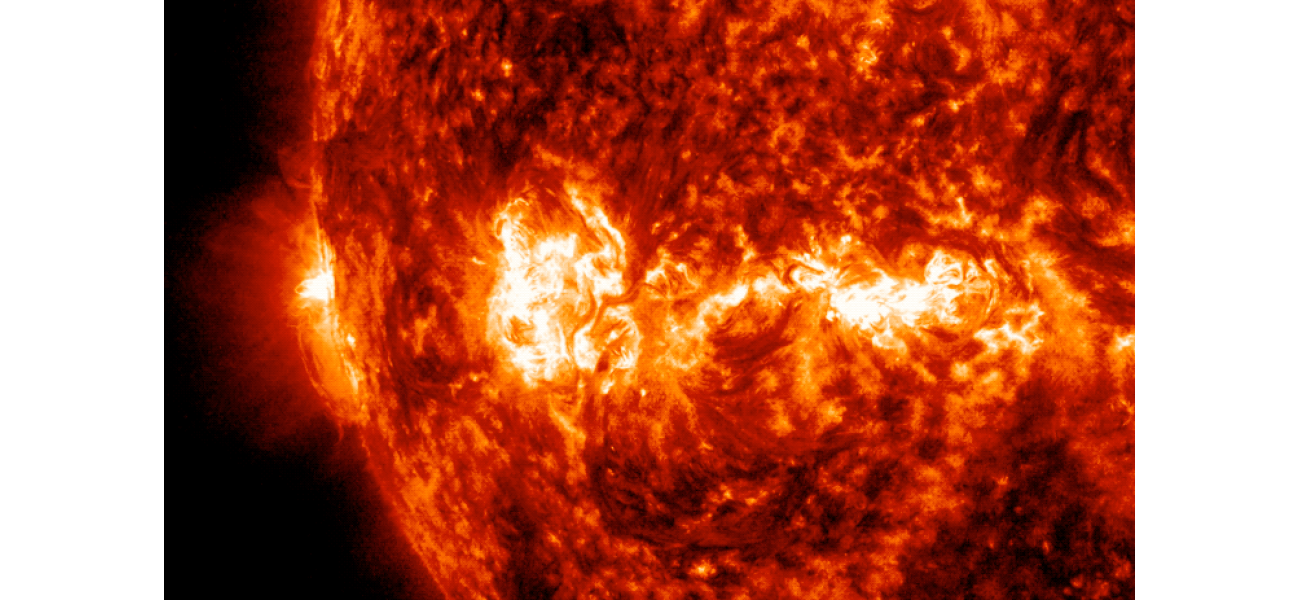A strong solar flare from the Sun caused radio disruptions on Earth.
It can destroy electricity and navigation systems.
November 7th 2024.

Yesterday afternoon, the Sun unleashed a powerful solar flare, causing a widespread radio blackout. This isn't the first time this has happened, as the Sun is known to occasionally release bursts of radiation in the form of solar flares. These flares can disrupt high frequency radio signals, affecting areas in the Atlantic Ocean and the southern hemisphere, including South America and Africa.
The impact of a solar flare goes beyond just radio communication. It can also affect electric power grids, navigation signals, and even pose risks to astronauts and spacecraft. Experts have warned about the potential damage that a strong solar flare can cause to critical infrastructure. When a particularly strong flare occurs, it can disturb the Earth's magnetic field, resulting in a geomagnetic storm.
In fact, just last May, multiple coronal mass ejections caused the strongest geomagnetic storm, which had a massive impact on the US precision industry. This industry relies on GPS technology to improve crop yields and make farming more efficient. The solar flare that occurred yesterday was released from a sunspot region known as AR 3883.
Sunspots are darker, cooler areas on the surface of the Sun and can be as large as planets. They are also where the Sun's strong magnetic field comes to the surface. The flare that occurred yesterday was the strongest from this particular sunspot, classified as an X2.3 flare, which is part of the most intense X class of flares, according to Nasa.
Solar flares are our solar system's largest explosive events, releasing intense bursts of radiation due to the release of magnetic energy associated with sunspots. These flares can be observed as bright areas on the Sun and can last for minutes or even hours. The latest flare was monitored by Nasa's Solar Dynamics Observatory, a constant watchful eye on the Sun's surface.
The National Oceanic and Atmospheric Administration's (NOAA) Space Weather Prediction Center reported that the flare was classified as R3-Strong on their scale, which is specific for radio blackouts. This scale helps to determine the potential impact of solar flares on Earth. In this case, it led to a shortwave radio blackout.
Unfortunately, this may not be the last we see of solar flare activity. As the Sun enters the peak of its 11-year solar cycle, such events are likely to increase. However, flares of this strength are not common, although not entirely unusual, during the solar maximum, according to the NOAA's SWPC. They also warned of the possibility of more, although less intense, flares occurring throughout the week.
Solar flares are often observed by the light they emit, particularly in x-rays and optical light. These flares also accelerate particles such as electrons, protons, and heavier particles. This increased solar activity is also responsible for the recent sightings of the northern lights, which have been seen more frequently and further south than usual.
While solar flares are not directly responsible for the aurora borealis, they can contribute to it when combined with coronal mass ejections. These ejections erupt from active sunspots and can create solar storms that interact with Earth's magnetic field. The resulting impact can create beautiful displays of light in the sky, also known as the aurora. As the magnetosphere repels the storm, it creates the mesmerizing aurora we are lucky enough to witness.
The impact of a solar flare goes beyond just radio communication. It can also affect electric power grids, navigation signals, and even pose risks to astronauts and spacecraft. Experts have warned about the potential damage that a strong solar flare can cause to critical infrastructure. When a particularly strong flare occurs, it can disturb the Earth's magnetic field, resulting in a geomagnetic storm.
In fact, just last May, multiple coronal mass ejections caused the strongest geomagnetic storm, which had a massive impact on the US precision industry. This industry relies on GPS technology to improve crop yields and make farming more efficient. The solar flare that occurred yesterday was released from a sunspot region known as AR 3883.
Sunspots are darker, cooler areas on the surface of the Sun and can be as large as planets. They are also where the Sun's strong magnetic field comes to the surface. The flare that occurred yesterday was the strongest from this particular sunspot, classified as an X2.3 flare, which is part of the most intense X class of flares, according to Nasa.
Solar flares are our solar system's largest explosive events, releasing intense bursts of radiation due to the release of magnetic energy associated with sunspots. These flares can be observed as bright areas on the Sun and can last for minutes or even hours. The latest flare was monitored by Nasa's Solar Dynamics Observatory, a constant watchful eye on the Sun's surface.
The National Oceanic and Atmospheric Administration's (NOAA) Space Weather Prediction Center reported that the flare was classified as R3-Strong on their scale, which is specific for radio blackouts. This scale helps to determine the potential impact of solar flares on Earth. In this case, it led to a shortwave radio blackout.
Unfortunately, this may not be the last we see of solar flare activity. As the Sun enters the peak of its 11-year solar cycle, such events are likely to increase. However, flares of this strength are not common, although not entirely unusual, during the solar maximum, according to the NOAA's SWPC. They also warned of the possibility of more, although less intense, flares occurring throughout the week.
Solar flares are often observed by the light they emit, particularly in x-rays and optical light. These flares also accelerate particles such as electrons, protons, and heavier particles. This increased solar activity is also responsible for the recent sightings of the northern lights, which have been seen more frequently and further south than usual.
While solar flares are not directly responsible for the aurora borealis, they can contribute to it when combined with coronal mass ejections. These ejections erupt from active sunspots and can create solar storms that interact with Earth's magnetic field. The resulting impact can create beautiful displays of light in the sky, also known as the aurora. As the magnetosphere repels the storm, it creates the mesmerizing aurora we are lucky enough to witness.
[This article has been trending online recently and has been generated with AI. Your feed is customized.]
[Generative AI is experimental.]
0
0
Submit Comment





